Block-Making 1The 1/160 scale from certain perspectives is rather inconvenient actually: too big to fake things and too small to do them properly due to practical limitations of tool sizes and materials dimensions.
Blocks at this scale would probably come in the range between 0.8 mm and 2 mm length. The latter would be a hefty 32 cm (or 13”) in real size, at least for smaller ships.
When I started dabbling with photo-etching in around 2007, I had the idea to fashion blocks from surface etched parts folded up and soldered together. As the need for blocks only arose now, I had never tried out the idea. Since then I got the laser-cutter and thought I might give the same principle a try, laminating the blocks from laser-cut pieces of paper. I am aware that larger blocks, build up from laser-cut wood pieces, are commercially available now.
My preoccupation was to produce blocks of the correct outside shape and through which the rope passes prototype fashion, i.e. to avoid the brick-like thingies from which the ropes sticks out vertically and then goes down with a sharp kink, as seen all too often on models.
**************
Warning, the following text describes some dead ends without success - As aligning the tiny parts correctly would be the main challenge, I drew the pieces at their correct relative location into small frets of several blocks that would be laminated onto each other. Once the lacquer was dry, the blocks could be separated. As I needed various double-blocks for the boat-davits and the anchor-cranes, I started out immediately with that challenge, thinking that, once mastered, single blocks would be comparatively easy to make. In fact, due to the thicknes of the Canson-paper, I needed seven layers, one for the outer shell on each side, one in the middle separating the sheaves, and the sheaves made up from two layers each. While the lamination as such worked well, aligning the seven frets precisely enough did not work too well. It also proved impossible to sand the tiny paper blocks to shape and smooth enough. The main problem, however, was that somehow the hole for passing through the rope always got clogged up. Opening it up with a drill then invariably let to the distruction of the block.
After a dozen of tries with different variants of the laser-cut parts to facilitate alignment etc. I finally gave up that idea.
Next came several experiments with the classical methods of carving blocks from billets, but using styrene or acrylic glass, rather than wood. While both materials are easy to drill, they proved too soft for shaping the grooves etc. cleanly, particularly the styrene. Attempts to cut slots for the sheaves, then to glue on a bottom piece to close the slots, and to later insert turned sheaves failed also. It was impossible to keep the 0.2 mm wide and 0.8 mm high slots clean enough from glue and cleaning them out afterwards at this dimension is hardly possible. Using brass and soldering equally failed to produce the desired result.
**************
Now comes the success story - In the end I resorted to my trusted bakelite. This material is hard and does not smear, but is much more brittle than the other materials. Drilling 0.2 mm holes is still quite easy and doesn’t strain the drills too much.
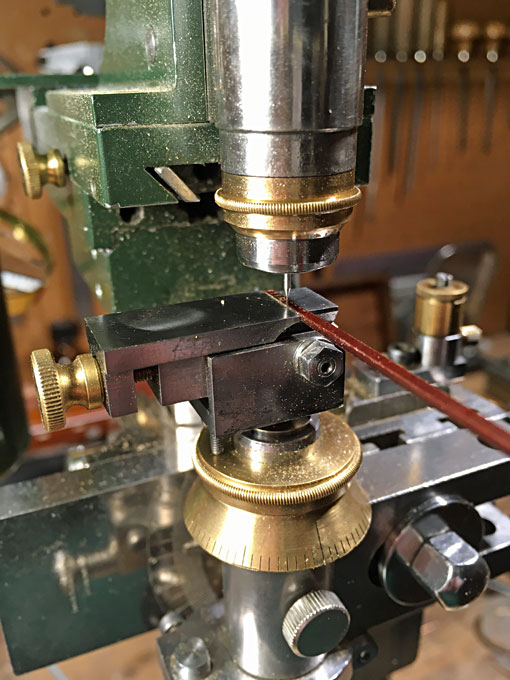 Drilling 0.2 mm holes into bakelite strips
Drilling 0.2 mm holes into bakelite stripsI cut strips of the required width from a 1 mm sheet of bakelite to start with. The micro-mill then was used as a jig-borer and a row of holes drilled for a batch of blocks. Using a broken 0.2 mm drill, ground flat at the end, was then used as an end-mill to cut the grooves that simulate the slots for the sheaves.
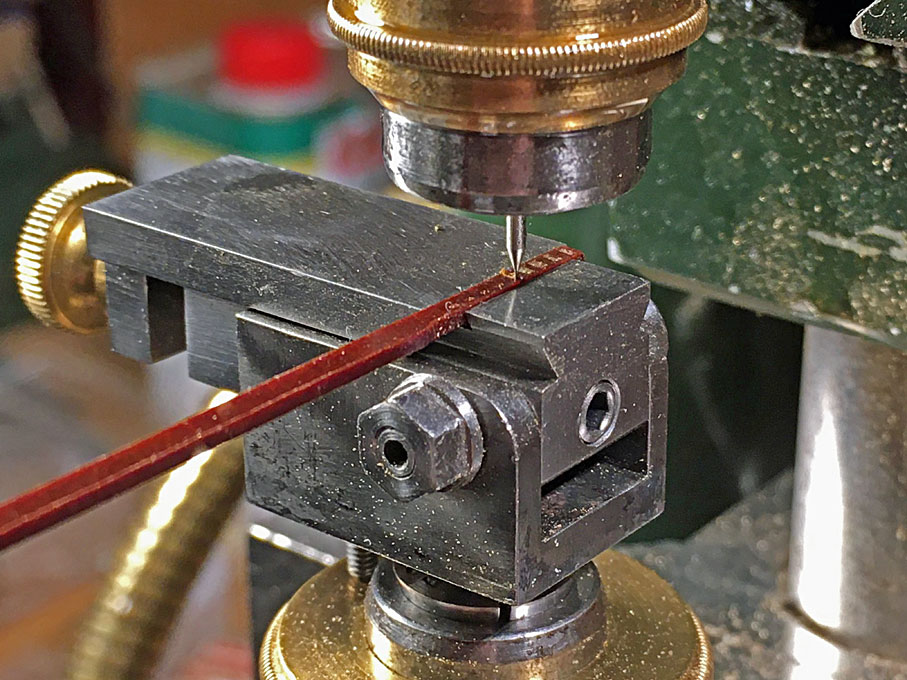 Milling 0.2 mm slots into bakelite strips
Milling 0.2 mm slots into bakelite strips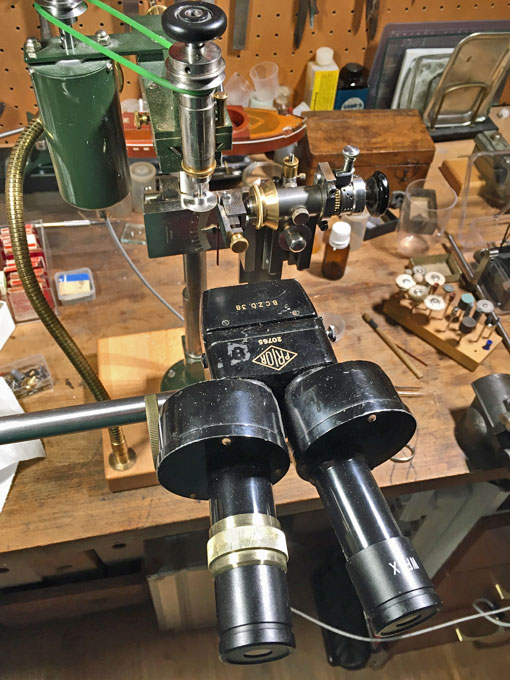 A stereo-microscope helps to safely perform the machinining with 0.2 mm tooling
A stereo-microscope helps to safely perform the machinining with 0.2 mm toolingThe profile of the blocks was roughly milled to shape using various cone-shaped burrs. The final shaping was done by first hand-filing with a diamond nail-file and then using a fine abrasive wheel in the hand-held drill.
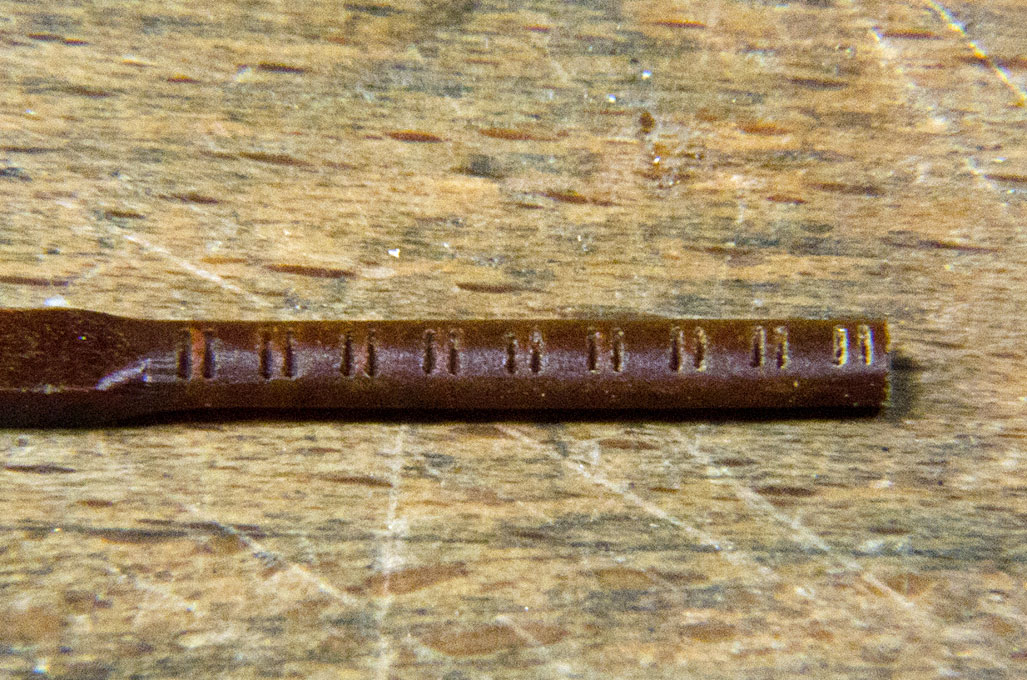 Row of double-blocks ready to be separated
Row of double-blocks ready to be separatedTo separate the blocks, the strip was taken into a collet of the dividing head and the blocks were sliced off with a circular saw. To prevent them from disappearing into any black holes of the workshop, the strip was backed with some adhesive tape.
The sides of the block-shells were smoothed and shaped with the blocks clamped in a kind of special hand-held vice. This vice has brass insert jaws that are curved and stepped so as to clamp the block securely while working on it with an abrasive wheel.
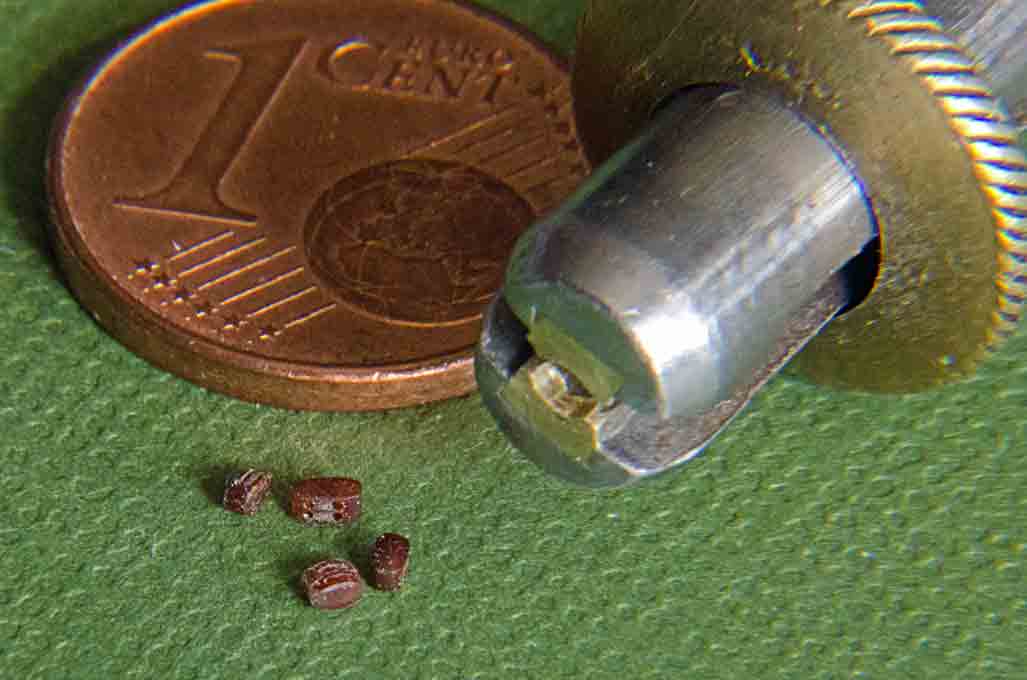 A collection of blocks and the special pin-vice to hold them
A collection of blocks and the special pin-vice to hold them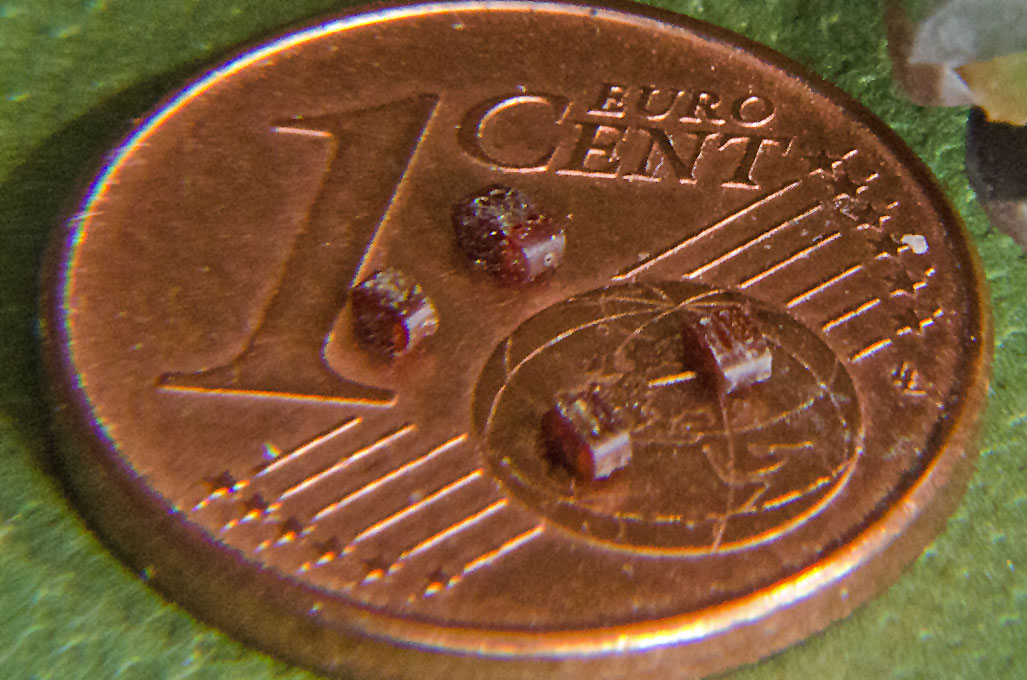 A collection of blocks and 1 Euro-Cent coin for comparison
A collection of blocks and 1 Euro-Cent coin for comparison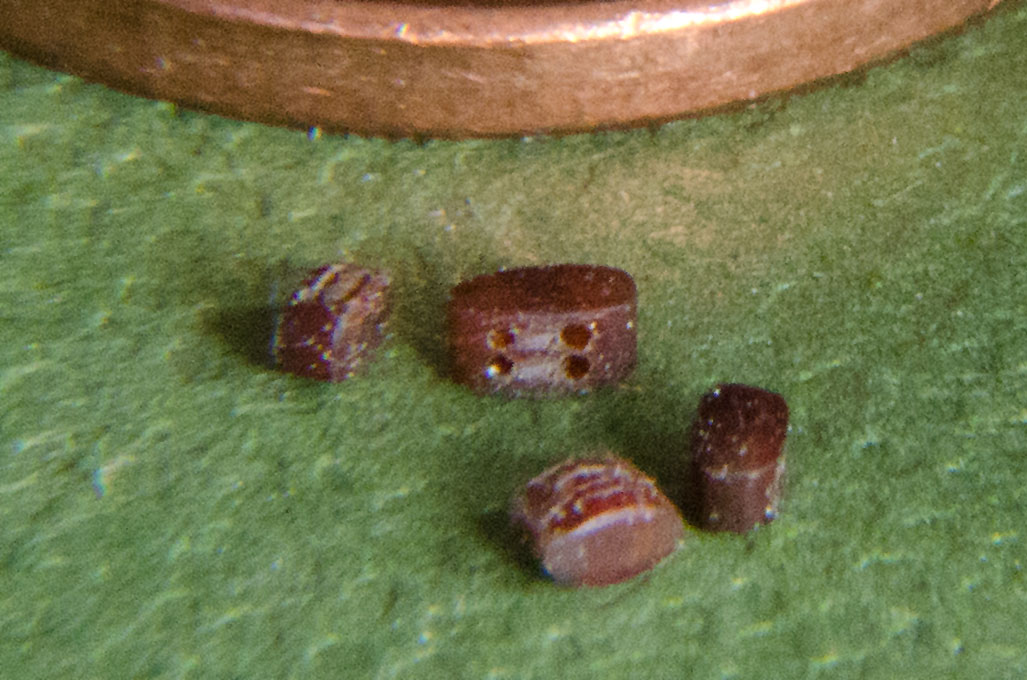 Two sizes of blocks of 2 mm and 1.6 mm length respectively
Two sizes of blocks of 2 mm and 1.6 mm length respectivelyThe blocks now have to be finished off with their external metal straps and hooks – another fiddly challenge ahead.
To be continued ....



